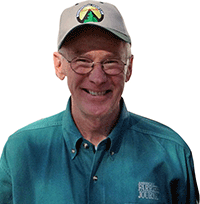Reiners present special challenges for shoers

As we have noted, a horse's hind end presents special challenge for a farrier (See "Don't Forget The Back End," AFJ January-February 2014, Pages 44 to 48). Some of these challenges are particularly specific to breeds and disciplines. One of the biggest of these involves the reining horse.
Splitting
In the last 30 years, the breeding of reining horses has become big business. Specific bloodlines produce horses that excel in competition. The best tend to stand from 14 to 14.2 hands and have a long sloping hip, powerful muscling in the croup and hind legs, strong hocks and short cannon bones. Breeders have created a stopping machine. But some machines are better than others.
Splitting is the term used to describe what happened when the hinds of a reining horse separate farther and farther during a sliding stop, eventually requiring them to come out of the stop. These horses cannot keep their hind legs parallel, but instead do the splits.
Most horses tend to stand with the feet slightly toed out, which is good. One option is to rotate the shoe on the foot slightly to the front, so that line of slide is going forward instead of outward. Another fix is to grind or forge a roll on the medial toe of the shoe, decreasing the drag to the inside.
Sticking While Spinning
As reiners spin, the inside hind foot stays planted in the same place and rotates on the ground as the horse revolves above it. Problems arise when the horse has trouble rotating the foot because of resistance.
A solution may be to bevel the edges of the shoe and bend the last 1/2 inch of heel upward, decreasing the resistance to the pivot.
Run-Down Pasterns
Sagging or run-down pasterns are due to a failure of the suspensory apparatus. The failure can develop during a horse's prime years or later in old age. It is a chronic condition, caused by a slow, gradual tearing of the suspensory ligament that is irreversible.
It is commonly seen in older horses that have had a lot of hard use and broodmares that have spent most of their lives carrying a foal.
Egg bar shoes are often prescribed. But I have seen them used with extra-long extensions in the belief that the longer shoes will provide more support. As long as the foot is flat on the ground and is not rocking back, an extra-long shoe is contraindicated and does more harm than good. It makes it more difficult for the horse to move around. This condition is very difficult to manage long term. Gravity eventually wins.
Always Keep Learning
One of the benefits of being a farrier is the knowledge that horses are a never-ending source of problems, so there will always be a need for our services. Being able to correctly solve these problems takes a lifetime of experience and learning. With more continuing education and a better understanding of improving technology, our chances of getting it right are becoming better.
But old fashioned attention to detail and all around understanding of how horses think and function are still necessary. Good luck in getting it right the first time.
It's Not Always The Shoes
Not so long ago my best client was at a horse show with the main show string. While she was gone, I reset the rest of the horses at the farm. On her return she called to say that two of the horses I worked on were now hitting behind and wondered - somewhat accusingly - if I had done anything different.
I immediately returned and checked the horses. Sure enough they were banging their ankles like fury. I defended my work and advised her to call her vet. His examination revealed both horses had extremely sore muscles over the hips. He recommended rest. The mystery was solved when the grooms admitted that - because there were fewer horses to turn out - the horses that hadn't gone to the show were left out twice as long as usual.
It turned out that the two horses that developed interference issues took exception to being left out. They displayed their annoyance by repeatedly running back and forth on the fence line and sliding vigorously into the deeply eroded corners.
This incident taught me the importance of standing your ground and not being hasty in making changes until all the facts are in.
Another lesson I learned was to encourage my clients to fence off paddock corners, creating more of an octagon and preventing the horses from slide stopping in the corners. Another lesson is to bring the horse in when they start running frantically.








Post a comment
Report Abusive Comment